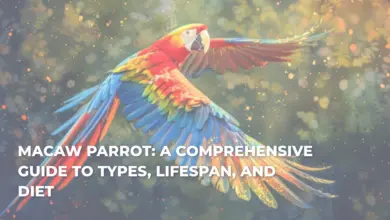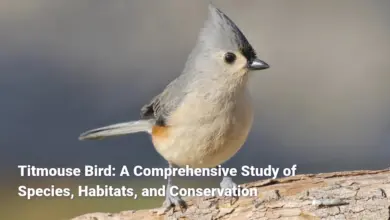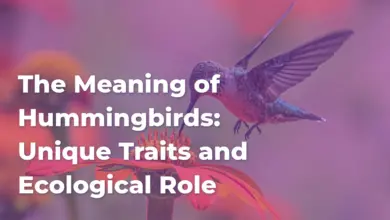Snowy Owl: In-Depth Guide to Habitat, Behavior, Reproduction, and Cultural Significance
Comprehensive Insights into the Snowy Owl: Habitat, Behavior, Reproduction, and Its Role in Culture
Snowy Owl Habitat and Distribution
The snowy owl, scientifically known as Bubo scandiacus, is a captivating bird that enchants wildlife enthusiasts and casual observers alike with its striking appearance and unique adaptations. Known for its illustrious white feathers that resemble the snow-covered tundra it inhabits, the snowy owl stands as a symbol of the Arctic. Its habitat and distribution are primarily concentrated in the far-reaching Arctic regions, where it breeds on remote plains and tundra. Migrating south during the winter months, these owls venture into diverse environments, including open fields, coastal dunes, and even urban settings, where they expertly blend into their surroundings. This remarkable adaptability not only showcases the snowy owl’s resourcefulness but also emphasizes the delicate balance between its ecological niche and the challenges posed by changing climates, prey availability, and habitat disturbance.
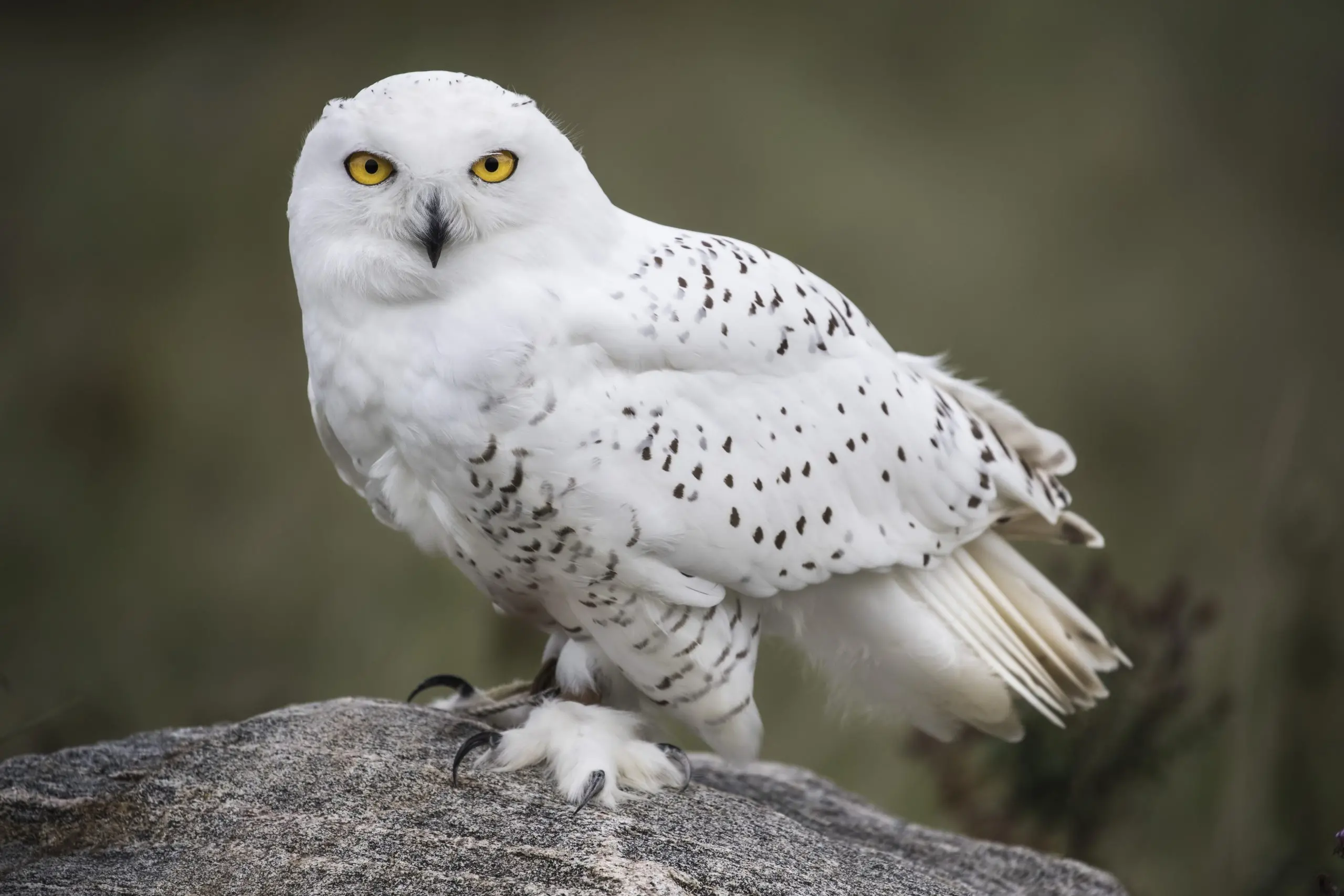
As we delve into the intricacies of the snowy owl’s habitat and distribution, we will explore the specific geographic range of these magnificent creatures across North America and Eurasia. We will also examine the various habitats they prefer, highlighting how their behavioral patterns align with environmental conditions and prey availability. By understanding their habitats, we can appreciate the complex ecosystem in which the snowy owl thrives and recognize the species’ significance in both cultural and ecological contexts.
Geographic Range of the Snowy Owl
The geographic range of the snowy owl is as expansive and diverse as the landscapes it inhabits. Primarily, these intriguing birds are found in the Arctic tundras that sprawl across northern Canada, Alaska, and parts of Siberia and Greenland. This vast region serves as their breeding ground where they find ample nesting sites and food sources, primarily lemmings. However, the snowy owl’s adventurous spirit manifests during winter months when many individuals migrate southward, expanding their range into temperate regions. Think of the snowy owl as a nomad, wandering away from its Arctic home to seek food and shelter in new lands.
- Breeding Grounds: Breeding occurs predominantly in the Arctic Circle, specifically within tundra ecosystems, characterized by sparse vegetation and open terrains.
- Winter Distribution: In winter, snowy owls make their way into lower latitudes, with common sightings reported in states such as New York, North Dakota, and parts of New England, showcasing a remarkable adaptability to various habitats.
- Irruptive Migrants: Snowy owls are known for being irruptive migrants, a term that describes their unpredictable southward migrations based on food availability, particularly lemmings. Certain winters may see significant numbers appear in southern areas while others may remain in northern territories.
Witnessing a snowy owl during its migration can almost feel like catching a glimpse of a snowflake drifting in the wind. Every sighting or encounter reinforces the importance of studying these majestic birds and understanding the ecological factors that influence their seasonal patterns. Ultimately, comprehending their geographic distribution sheds light on the various pressures that affect snowy owl populations, thus enlightening conservation efforts aimed at protecting their habitats.
North American Environments
In North America, snowy owls inhabit a range of environments that seamlessly blend with their hunting and breeding strategies. From the icy tundras of the northern territories to less frigid environments further south, their adaptability to habitat variations offers fascinating insights into their biological and ecological behaviors.
Tundra Habitats: Breeding primarily occurs in the tundras of Canada and Alaska, where open spaces dominate the landscape. These habitats provide essential characteristics:
- Nesting Sites: Snowy owls prefer nesting in depressions scraped directly in the ground. This method allows them to gain access to an elevated vantage point, critical for spotting potential predators and prey alike.
- Prey Availability: The abundance of lemmings during breeding seasons significantly influences their reproductive success, often correlating with higher clutch counts.
Open Fields and Coastal Regions: During winter migrations, snowy owls seek ample hunting opportunities in a variety of landscapes.
- Urban Areas: Interestingly, snowy owls also venture into urban settings, where they might be seen perched on fences, rooftops, or even light poles, adapting to human-altered environments to facilitate their hunting endeavors.
- Great Lakes Region: This area boasts numerous fields and shorelines ideal for hunting, providing open spaces where snowy owls can thrive while remaining camouflaged against their surroundings.
Open Plains: The great plains of the northern United States serve as additional hunting grounds, further expanding the array of habitats where snowy owls can be found during the winter months.
Inhabiting such diverse environments enables snowy owls to not only thrive but also to showcase the intricate connections between their survival strategies and the ecosystems surrounding them. As we explore the different aspects of snowy owl habitats, their expansive range highlights the complex relationship between species and the environments they inhabit.
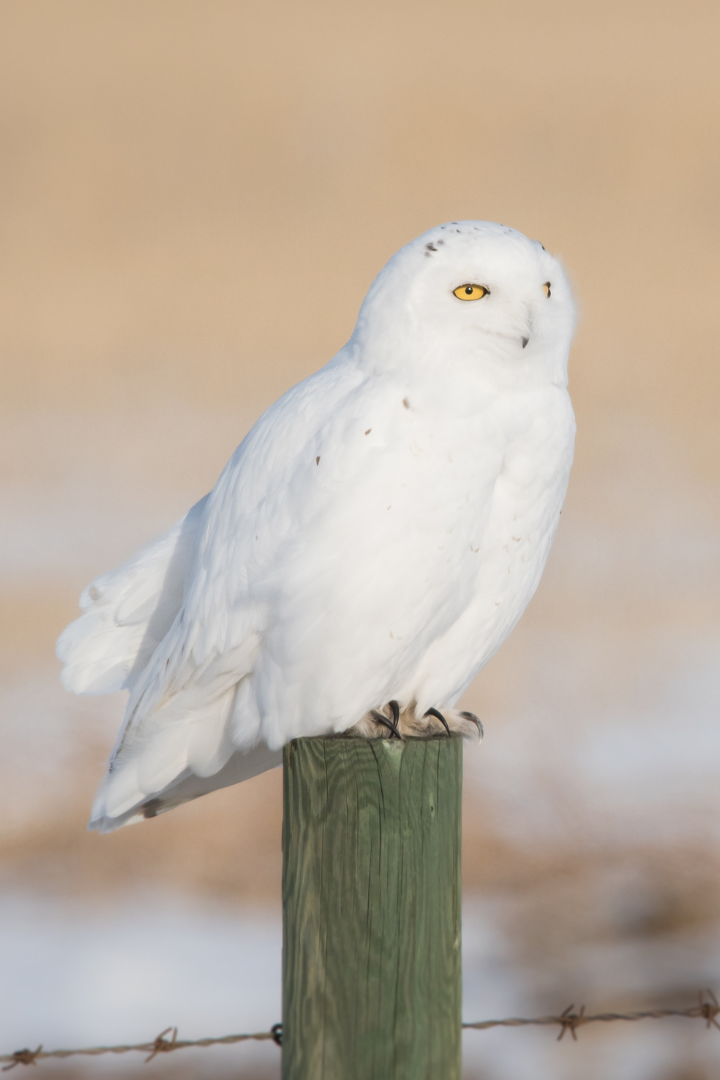
Eurasian Habitats
Across the ocean, the snowy owl’s ranges extend into the vast tundra terrains of Eurasia, where similar ecological traits and behavioral patterns arise. The predilection for remote, cold regions signifies that these areas are critical for breeding and foraging.
Breeding Grounds: The primary breeding habitats of the snowy owl in Eurasia include regions in Northern Russia, Scandinavia, and portions of the Canadian Arctic. They are often found nesting on high terrains, such as ridges and hills, which help mitigate snow accumulation while offering excellent visibility.
- Habitat Characteristics: The tundra provides an essential ecosystem for snow-covered environments, abundant with small mammals, particularly lemmings and voles, that form the core of their diet.
Nomadic Behavior: Unlike many other owl species that say rooted in one location year-round, snowy owls exhibit nomadic tendencies during winter months.
- Migration Patterns: During this time, they travel considerable distances southward, often preferring areas such as the northern United States and parts of central Europe, adapting to shifting prey availability.
- Variability Based on Food Sources: This nomadic behavior underscores the owl’s reliance and connection with the ecosystem, moving in response to food availability and other ecological factors.
Varying Habitat Preferences: During winter, snowy owls have been documented in coastal areas, open fields, and urban landscapes similar to their North American counterparts, showcasing their ability to adjust behaviors based on location and available resources.
Through understanding snowy owls’ habitats in both North America and Eurasia, it’s evident that these birds are highly adaptable creatures, capable of thriving in environments ranging from desolate tundras to the bustling landscapes of cities. The snowy owl’s resilience amidst various ecological pressures illustrates the intricate balance of nature and underscores the importance of preserving their habitats for future generations to marvel at.
Snowy Owl Behavior and Adaptations
Snowy owls, known for their graceful flight and striking appearance, exhibit a range of intricate behaviors and adaptations that enable them to thrive in some of the harshest environments on the planet. Their unique physiological traits and behavioral patterns not only facilitate hunting and breeding but also play a significant role in how they interact with their surroundings. From their hunting strategies to reproductive behaviors, each aspect of the snowy owl’s life is interwoven with the requirements of their formidable Arctic habitats.
Understanding the behaviors of snowy owls goes far beyond their stunning plumage; it delves into how these birds have adapted to survive and flourish in a world filled with extremes. By dissecting their hunting strategies, dietary preferences, and reproductive behaviors, we can paint a comprehensive picture of these magnificent birds’ lives and the ecological significance they embody.
Hunting Strategies and Diet
At the core of the snowy owl’s survival in the Arctic and sub-Arctic regions lies its hunting strategies and dietary habits. Contrary to many other owl species that primarily hunt at night, snowy owls are diurnal predators, actively seeking food during both day and night. This behavioral flexibility provides them with a distinct advantage, enabling them to maximize their hunting opportunities.
- Hunting Variability: Snowy owls exhibit a mixed diet that is influenced by local prey availability. While lemmings are their primary food source, their adaptability to include alternative prey, such as voles or smaller birds, illustrates their exceptional hunting prowess.
- Hunting Techniques: To locate prey effectively, snowy owls utilize their remarkable eyesight and acute hearing, often perching in high locations to get a better view of their surroundings. Their hunting methods generally include a wait-and-pounce strategy, characterized by a patient approach where they scan the landscape before launching swift pursuits to capture unsuspecting targets.
- Adaptability to Food Sources: In years of abundant lemming populations, snowy owls increase their reproductive success, showcasing an intricate link between food and their breeding habits. This dietary dependence highlights their vital role as apex predators in their ecosystems, exerting control over small mammal populations, which, in turn, shapes community dynamics.
Primary Prey of the Snowy Owl
The dietary preferences of the snowy owl can be broadly categorized into primary prey items that directly define their hunting success. These dietary habits showcase the ecological balance that snowy owls maintain within their habitat.
- Lemmings: As the cornerstone of the snowy owl’s diet, lemmings provide an abundance of nutrients for these birds. During peak lemming years, snowy owls may consume over 1,600 lemmings in just one year, leading to increased reproductive success as they raise larger broods.
- Voles: Another significant food item, voles become important in regions where lemmings are less plentiful. Snowy owls display an impressive adaptability in shifting their hunting focus based on prey availability.
- Alternative Prey: In addition to small mammals, snowy owls also hunt various birds, including ptarmigan, ducks, and other waterfowl, thus reflecting their adaptability and versatility in the face of changing environmental conditions.
By recognizing these dietary preferences, we can appreciate the ecological role that snowy owls fulfill within their environments. Their hunting success directly influences the populations of smaller mammals and bird species, contributing to the overall health and balance of their ecosystems.
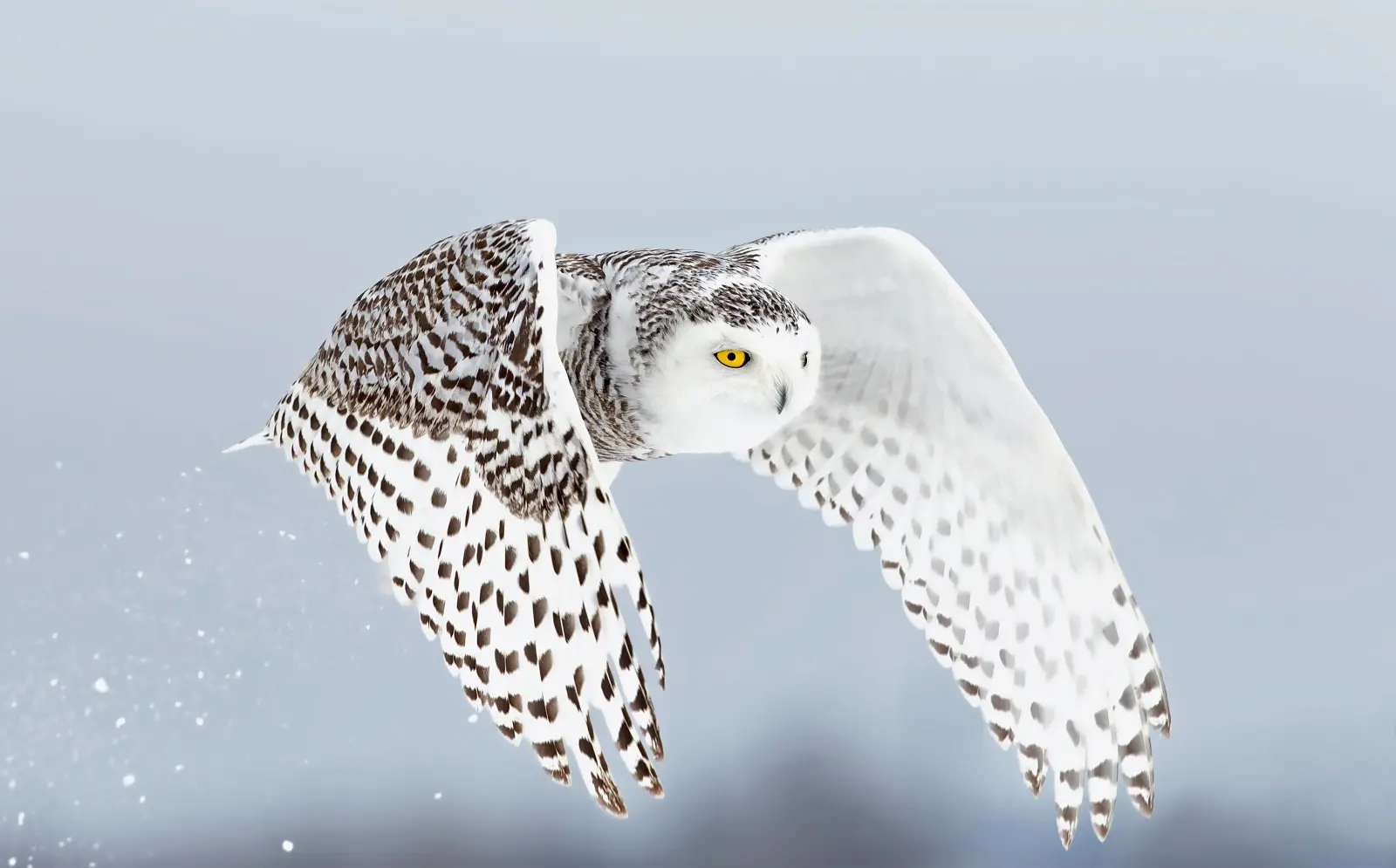
Hunting Techniques
Snowy owls have evolved exceptional hunting techniques that assert their dominance over their prey. Their unique adaptations and behavioral strategies underline their position as apex predators in the Arctic ecosystem.
- Silent Flight: One of the key hunting adaptations is their silent flight, made possible by specialized feather structures that minimize sound. This stealth allows snowy owls to approach prey without warning, increasing their chances of a successful hunt.
- Keen Senses: Their exceptional eyesight, combined with acute hearing, enables them to detect movement from a considerable distance. Snowy owls are known to be patient hunters, often spending long periods observing their surroundings before taking action.
- Perching Strategy: Snowy owls often exhibit a “sit-and-wait” approach, perching on prominent structures like fence posts or rocks, allowing them to survey large areas for potential prey. When they spot a target, they employ rapid descents, leveraging their powerful talons and the element of surprise.
- Opportunistic Feeding: Flexibility remains a hallmark of their hunting techniques. Snowy owls readily adapt to changes in the availability of prey. In periods where lemmings are sparse, their diets may shift to include larger prey, showcasing their opportunistic feeding behavior.
Through these sophisticated strategies, snowy owls outperform many other predators in the Arctic ecosystem, ensuring their survival despite the challenges posed by their harsh environment. By analyzing their hunting techniques, we can glean valuable insights into how these magnificent birds adapt to an ever-changing world.
Snowy Owl Reproduction and Lifespan
The reproductive behaviors and lifespan of snowy owls encapsulate a series of intricate adaptations designed for survival in one of the most challenging habitats on Earth. Observing how these birds navigate breeding, chick development, and their interactions with the environment reveals significant insights into their ecological role and challenges facing snowy owl populations.
As these magnificent birds return to their breeding grounds during the short Arctic summer, various factors influence their success in raising young. From nest site selection to chick development phases, each component of their reproductive cycle is tightly linked to the availability of resources and environmental conditions.
Breeding Habits and Nesting
Breeding habits of snowy owls generally align with the changes in environmental conditions an essential factor that dictates their reproductive success. Typically, snowy owls breed between April and June, but this timing may vary based on local conditions such as food availability and climate factors.
- Nest Construction: Uniquely, snowy owls do not construct traditional nests; rather, they create simple depressions in the ground. These nesting sites are often located in elevated terrains, enhancing visibility and reducing snow accumulation during harsh weather conditions.
- Occupying Elevation: The choice of elevated nesting sites offers a tactical advantage against ground predators and facilitates better surveillance over their territory.
- Reproductive Clutch Size: Snowy owls typically lay 3 to 11 eggs, with the size of the clutch often influenced by local prey populations. During lemming population booms, the number of laid eggs tends to increase, further illustrating the relationship between food availability and reproductive outcomes.
- Parental Involvement: The female alone incubates the eggs, lasting approximately 31 to 33 days, while the male takes on the responsibility of providing food for her during this period.
This interplay between nesting behavior, environmental influences, and parental roles symbolizes the sophisticated adaptability of snowy owls, thus enhancing their chances of breeding success even amid the extremes of their Arctic habitats.
Typical Laying Periods
The timing of laying periods in snowy owls is intricately tied to ecological dynamics and varies according to geographical location and local conditions.
- Breeding Timeline: Generally, snowy owls begin laying eggs between mid-April to early May. This timing ensures that hatching coincides with peak food availability, largely influenced by lemming populations.
- Localized Variability: Regions with abundant lemmings may see earlier laying periods, promoting healthier chick development, while areas experiencing food scarcity may observe delayed reproductive events.
- Egg Incubation: The female incubates the eggs for about 31 to 33 days. As the chicks begin to hatch, they may differ in size and development, which has implications for their survival. This asynchronous hatching strategy enhances competitive dynamics among siblings, potentially increasing the overall survival rate of the earliest hatched chicks.
From predicting breeding success to linking ecology with reproduction, the typical laying period of snowy owls reflects the complex interaction between biology and environmental resource availability.
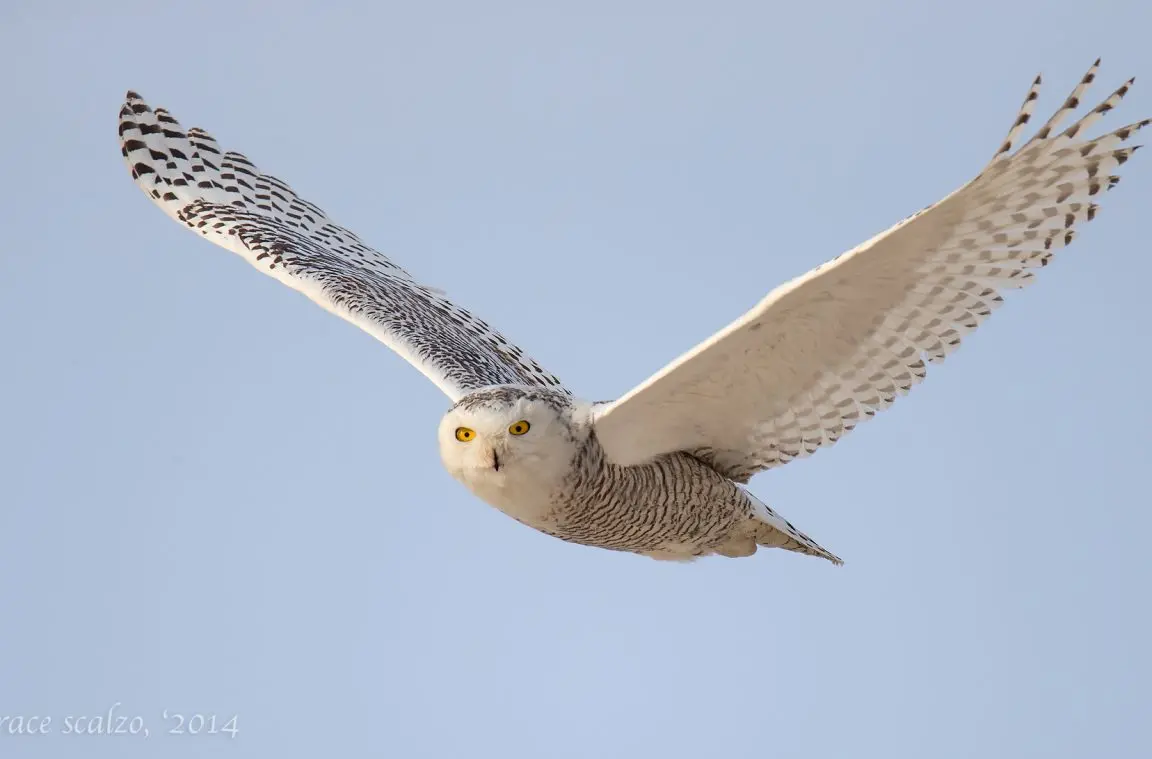
Chick Development Phases
After the chicks are hatched, their development progresses through several distinct phases critical for ensuring their survival and eventual independence.
- Early Growth: Chicks remain in the nest for approximately 2 to 3 weeks following hatching. During this crucial phase, they depend exclusively on their parents for food and protection from potential predators.
- Feeding and Survival: The parents continue to provide sustenance while also teaching the chicks essential skills needed for hunting. Young owls must adapt quickly to their environment, learning to recognize prey and practice flight.
- First Flights: Around three weeks of age, the chicks make their first flights, an essential milestone in their development. This transition marks the beginning of their journey toward independence and the pursuit of self-sufficient foraging.
- Post-Nesting Care: Parental care extends beyond the first flights, as the parents continue to support their young for several weeks, ensuring they develop essential hunting skills before fully venturing out on their own.
Understanding the phases of chick development emphasizes the crucial role of parental involvement in the success of snowy owl families. By navigating these complex stages, snowy owls reflect the resilience and adaptability of their species, ensuring future generations thrive in Arctic environments.
Cultural Significance of the Snowy Owl
Beyond their captivating presence in the wild, snowy owls have garnered considerable cultural significance across various societies and traditions. From ancient mythologies to contemporary media, these majestic birds symbolize a wealth of meanings, often reflecting the intricate relationship between humans and the natural world. By examining how snowy owls have permeated cultural narratives, we can appreciate their roles as symbols of wisdom, protection, and mystery throughout history.
As we explore the far-reaching cultural influence of snowy owls, we’ll delve into their representation in mythology, folklore, literature, and the media, uncovering the values and ideas that these magnificent birds evoke in different contexts.
Snowy Owl in Mythology and Folklore
In various cultures, snowy owls have found their place among mythological narratives and folklore, serving as symbols of important themes such as wisdom, protection, and guidance.
- Norse Mythology: In ancient Norse traditions, snowy owls are closely associated with the god Odin, known for his pursuit of wisdom. Often viewed as messengers between realms, they symbolize insight and foresight, hinting at significant changes or challenges when encountered by travelers.
- Inuit Culture: Revered among the Inuit peoples, snowy owls are considered sacred beings that embody supernatural powers. They serve as spiritual guides, helping individuals connect with ancestral spirits in shamanistic practices while symbolizing protection and knowledge.
- Native American Traditions: In various Native American tribes, snowy owls are seen as symbols of purity and guardianship. Many tribes regard them as powerful spiritual beings that provide insight, healing, and good fortune, further emphasizing their integral role within cultural narratives.
These mythological and folkloric connections deepen our understanding of how snowy owls represent human values and beliefs, illuminating the significance they hold in shaping cultural identities while reflecting the interplay between nature and spirituality.
Representation in Various Cultures
Beyond mythology, snowy owls have also influenced contemporary culture, appearing in artistic representations that invoke themes of wisdom, resilience, and connection to the natural world.
- Ancient Civilizations: In ancient Egyptian culture, snowy owls were associated with Seshat, the goddess of wisdom and writing. Their presence symbolized knowledge and truth, acting as guardians against evil forces.
- Modern Interpretations: In contemporary literature and media, snowy owls often embody themes of loyalty, intelligence, and intuition. J.K. Rowling’s character Hedwig from the “Harry Potter” series notably portrays an emotional connection between humans and owls, signifying loyalty and companionship.
- Symbol of Conservation: In modern environmental efforts, snowy owls serve as icons of the struggle against climate change. Their plight reflects the broader consequences of habitat loss and emphasizes the importance of conservation initiatives worldwide.
By exploring the multifaceted representation of snowy owls across cultures, we can appreciate their enduring significance as symbols of knowledge, connection, and humanity’s relationship with the natural world. Their artistic presence not only enhances cultural narratives but also reinforces the importance of their protection in light of changing environmental conditions.
Snowy Owl in Literature and Media
The snowy owl’s portrayal in literature and media transcends mere visual representation, delving into deeper narratives that connect audiences to themes of mystery, adventure, and understanding of the natural world.
- Literary Symbolism: Snowy owls frequently symbolize wisdom in poetry and prose. Authors often utilize their striking appearance and habits to reflect on complex themes such as intuition, journey, and exploration of the unknown. Descriptions of their silent flight or watchful gaze evoke a sense of intrigue and connection with nature.
- Cinematic Representations: Various films and documentaries highlight snowy owls’ behaviors and habitats, showcasing their role in ecological narratives and raising awareness about conservation challenges. Documentaries often emphasize their hunting strategies and family dynamics, amplifying appreciation for these unique birds.
- Impact on Wildlife Conservation: In the realm of media, snowy owls have become symbols of wildlife protection efforts, embodying the urgency of preserving their Arctic habitats in the face of climate change. Public interest in snowy owls can prompt community action and conservation initiatives aimed at safeguarding their ecosystems.
The significance of snowy owls in literature and media serves to magnify their cultural importance while fostering a deeper appreciation of their ecological roles. Their presence throughout storytelling reinforces the vital connection between human imagination and environmental stewardship, highlighting the profound impact these majestic creatures have on society.
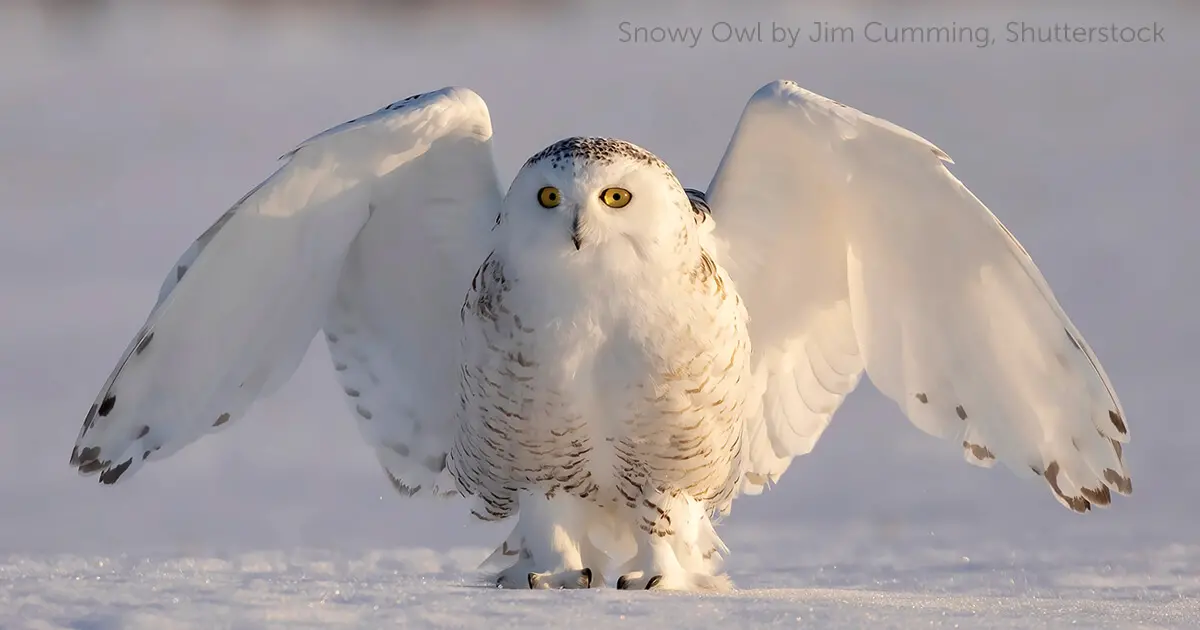
Research and Observations
The understanding of snowy owls and their behaviors is continually evolving, thanks to substantial research efforts and technological advancements. By employing a range of methodologies, scientists have gained valuable insights into snowy owl populations, migration patterns, and ecological requirements. Current research not only enriches our knowledge of these birds but also drives awareness of the conservation challenges they face.
As we explore ongoing studies and observations of snowy owls, we will look into the various research initiatives, technological advancements that facilitate data collection, and community involvement in conservation efforts, all of which contribute to our understanding of snowy owls and highlight their ecological importance.
Current Studies on Snowy Owl Populations
Current studies on snowy owl populations have seen a surge in interest due to significant ecological changes affecting their breeding grounds and migratory routes. One notable initiative is Project SNOWstorm, which utilizes cutting-edge tracking technologies to monitor snowy owl movements across North America.
- Tracking Efforts: Launched in response to a record invasion of snowy owls in 2013-2014, Project SNOWstorm employs GPS-GSM transmitters that allow researchers to track the movement patterns of individual owls in real time. This innovative approach provides insights into migration routes and habitat usage.
- Data Collection: Additively, the project includes genetic sampling: researchers work with blood, feather, and DNA samples to assess the genetic diversity of snowy owl populations. Such studies create connections between environmental conditions, food availability, and reproductive success.
- Population Dynamics: Trends observed through telemetry data have unveiled powerful visualizations of snowy owls’ migratory behaviors. Understanding how snowy owls interact with their environment during breeding and winter seasons sheds light on their ecological roles and responses to climate change.
Through ongoing research initiatives like Project SNOWstorm, our understanding continues to expand, offering invaluable insights into the dynamics of snowy owl populations and their responses to immediate environmental pressures.
Technologies Used in Research
Technological advancements play a crucial role in contemporary research on snowy owls. The deployment of new tools and techniques facilitates greater understanding of these majestic birds by allowing researchers to gather accurate and vast amounts of data.
- GPS Tracking Devices: The use of GPS technology enables researchers to monitor snowy owls in real-time, providing insights into their migration patterns and habitat selection. This technology has been groundbreaking in allowing scientists to investigate previously unknown migration behavior.
- Telemetry Studies: Telemetry techniques help in establishing behavioral baselines and mapping seasonal movements, enabling researchers to draw correlations between movement patterns and environmental factors impacting snowy owl populations.
- Genetic Analysis: With genetic analysis, researchers can understand population structure, mating systems, and genetic diversity within snowy owl populations. This data highlights the impact of environmental changes on genetic health and long-term viability.
- Remote Sensing: Researchers also utilize remote sensing technology to assess habitat quality and environmental variability across snowy owl ranges. By combining satellite imagery with ground data, ecologists can evaluate how changing landscapes influence snowy owl behaviors.
In summary, the application of these technologies exemplifies a new era of research that empowers conservationists, policymakers, and the public to contribute meaningfully to snowy owl protection efforts.
Citizen Science Contributions
Citizen science has emerged as an essential avenue for gathering data on snowy owl populations and behaviors. Engaging the public in educational initiatives promotes awareness and facilitates vital research efforts.
- Public Engagement in Data Collection: Programs like Project SNOWstorm actively invite citizen scientists to participate by reporting snowy owl sightings and contributing to tracking initiatives. This public engagement enhances the quality of data collected and enables a more comprehensive understanding of snowy owl distributions.
- Estimating Winter Distribution: For instance, projects have harnessed the power of citizen science to estimate winter distributions by analyzing observation data alongside bioclimatic variables. This multi-faceted approach helps identify key habitats utilized by snowy owls during migratory periods.
- Building Awareness: Citizen science efforts play a vital role in informing communities about snowy owl ecology and conservation needs, fostering a sense of stewardship among the public. Through local initiatives and outreach programs, citizens become advocates for snowy owl habitats and engage in meaningful conservation activities.
- Research Collaboration: Many universities and conservation organizations focus on collaborations with citizen scientists, enhancing the research scope and facilitating cross-disciplinary engagement. By bridging gaps between academia and the public, we can address critical conservation challenges.
Through citizen science contributions, the understanding of snowy owls is enriched, making it possible for local communities to play a significant role in ensuring the survival and protection of these incredible birds.
Tools for Snowy Owl Observation
For those captivated by snowy owls, engaging in observation activities provides a unique opportunity to connect with nature and deepen understanding of these magnificent birds. By equipping ourselves with the right tools and knowledge, we can enhance our observational experiences while minimizing our impact on their natural habitats.
In this section, we will dive into the best locations for snowy owl viewing, examine seasonal migration patterns, and outline recommended viewing times all of which contribute to a successful and ethical snowy owl observation experience.
Best Locations for Snowy Owl Viewing
Engaging in snowy owl observation requires selecting optimal viewing locations where these stunning birds are likely to be found during winter months. Here are some of the best locations for Snowden owl sightings:
- Canadian Arctic Archipelago: Serving as a breeding ground for snowy owls, observing these majestic birds in their natural habitat epitomizes the ultimate wildlife experience.
- Hudson Bay Lowlands: Known for its open fields and marshes that attract snowy owls in winter, this location offers ample opportunities for viewing their hunting behaviors while providing a picturesque backdrop.
- St. Lawrence River Valley: This region features suitable habitat, ensuring frequent sightings of snowy owls as they hunt in the expansive open spaces along the river.
- Great Lakes Region: Characterized by open environments resembling tundra habitats, the Great Lakes region becomes a haven for these owls during the winter months.
- Airports: Unorthodox but effective, many snowy owls frequent airport precursors where open lands create optimal hunting grounds.
By targeting these vantage points for snowy owl observation, enthusiasts are sure to enhance their likelihood of successful encounters while facilitating appreciation for the beauty and complexity of these enchanting birds.
Seasonal Migration Patterns
Snowy owls exhibit complex migration patterns influenced by environmental dynamics, prey availability, and climatic conditions. Understanding these migratory behaviors enriches our ability to observe and engage with snowy owls during their seasonal shifts.
- Irruptive Migration: Unlike many migratory birds that follow defined routes, snowy owls engage in irruptive migrations, meaning their southward movements vary significantly each year based on food resources and ecological factors. This unique behavior can culminate in impressive irruptions, where large numbers of owls traverse extensive distances into southern territories during unfavorable conditions.
- Timing and Locations: During winter months, snowy owls typically migrate south from their Arctic breeding habitats, with optimal viewing periods occurring between late November and early March. These migrations often lead them to suitable habitats, such as open fields, marshes, and even urban areas, where food is readily available.
- Food Availability Influence: The migration patterns of snowy owls remain intricately tied to prey availability; periods of lemming scarcity can drive increased migration southward as owls seek hunting opportunities in more temperate environments.
By carefully observing seasonal migration behavior, enthusiasts can maximize their chances of viewing snowy owls and deepen their appreciation for the remarkable ecological adaptations these birds exhibit.
Recommended Viewing Times
Successful snowy owl observation hinges on selecting not only the right locations but also the most favorable times for sightings. Here are some recommended practices to enhance the experience:
- Optimal Viewing Hours: Early mornings and late afternoons are typically the best times to spot snowy owls, as they tend to be more active during these periods as they hunt for prey. While they can be seen throughout the day, these times generally yield the highest likelihood of encounters.
- Winter Months: December to March marks the peak period for snowy owl sightings as they migrate southward seeking warmer climates. Anticipating their migration patterns provides important insights for observers seeking to see these spectacular birds.
- Respectful Observation: Maintaining a respectful distance from the owls is crucial to minimize disturbance to their natural behaviors. Observers should utilize binoculars or spotting scopes to watch from a safe distance, ensuring that snowy owls remain undisturbed during their hunting activities.
By following these recommendations and adopting ethical observational practices, enthusiasts not only maximize their chances of encountering snowy owls but also contribute positively to the understanding and conservation of these extraordinary birds.
Snowy Owl Facts and Trivia
The snowy owl is not just a beautiful bird; it is filled with fascinating facts and trivia that make it a subject of intrigue for bird enthusiasts, nature lovers, and the general public alike. From its unique adaptations to its distinct behavioral traits, snowy owls are remarkable creatures that embody the rugged beauty of their Arctic habitats. In this section, we will delve into the unique characteristics and physical features of snowy owls that set them apart from other avian species.
Unique Characteristics
Snowy owls possess a collection of prominent traits that make them stand out among raptors, embodying the elegance and prowess required for survival in extreme environments.
- Camouflage: Their predominantly white plumage, combined with faint dark markings, provides excellent camouflage in snow-covered tundras, allowing them to blend seamlessly into their surroundings while hunting.
- Dimorphism: The degree of plumage variation between male and female snowy owls also showcases sexual dimorphism. Males are nearly pure white, while females display more extensive dark barring, a characteristic that aids in their camouflage during nesting seasons.
- Exceptional Vision: Snowy owls are equipped with remarkable eyesight specifically adapted to low-light conditions. Their keen vision allows them to spot prey from significant distances, making them highly effective hunters.
- Adaptability: As highly adaptable predators, they thrive in a range of environments, from Arctic tundras to urban settings, demonstrating their ability to modify behaviors based on prey availability and habitat conditions.
- Social Structure: Typically solitary during most of the year, snowy owls may exhibit social behaviors during breeding seasons. They can be found in loose congregations in winter when food is abundant, reflecting the dynamic nature of their interactions.
By appreciating these unique characteristics, we gain a deeper understanding of snowy owls and the adaptations that position them as apex predators in their ecosystems.
Physical Features
The physical features of snowy owls contribute significantly to their functionality and effectiveness as hunters in their Arctic habitats.
- Size and Strength: Snowy owls are one of the largest owl species in North America, with body lengths ranging between 20 to 28 inches (50 to 70 cm) and wingspans extending up to 4.5 to 5.5 feet (1.4 to 1.7 m). Their robust size makes them formidable predators in the wild.
- Wing Structure: Their broad, rounded wings enable silent flight, crucial for hunting effectively. The unique feather structure reduces noise, allowing snowy owls to strike rapidly and stealthily.
- Legs and Feet: Snowy owls have feathered legs and feet that help insulate them against frigid temperatures, showcasing their specialized adaptations to life in polar climates. The feathers not only provide warmth but also assist them in gripping prey securely.
- Coloration Changes: Over time, snowy owls may exhibit changes in plumage coloration due to the accumulation of environmental factors like mud or dirt. This dynamic adaptation to their surroundings reflects their environmental responsiveness.
These physical attributes highlight the specialized adaptations that enable snowy owls to thrive as skilled predators. Understanding their features enriches our appreciation for these magnificent birds and the ecological niches they occupy.
Vocalizations and Communication
The vocalizations of snowy owls reflect a rich array of sounds that communicate various messages and emotions. Vocalization studies reveal key insights into how these owls express themselves in different contexts:
- Common Calls: Snowy owls produce a range of vocalizations, from soft hoots to piercing screams. Their most recognizable call consists of multiple hoots, often used by males during territorial displays.
- Alarm Calls: During instances of distress or nest disturbances, snowy owls emit sharp, alarm-like calls. Females produce high-pitched barks, while males typically employ deeper vocalizations.
- Mewing and Whistles: Females often produce a unique mewing sound, especially in feeding contexts or when engaging with their chicks. These vocalizations serve to maintain communication among family members.
- Chick Communications: Young owls also engage in vocalizations shortly after hatching, using cheeping sounds to signify hunger or discomfort. As they mature, their vocal repertoire expands, reflecting an intricate development of communication skills.
Through these varied vocalizations, snowy owls convey their needs and emotions, enrichening the complexity of their social interactions and providing essential information about their behaviors. Understanding their vocal patterns offers insights into their lives, highlighting the ecological and social dynamics within their species.
Conclusion
Snowy owls are remarkable avian creatures that not only captivate our imaginations but also play critical roles in their ecosystems. Their expansive geographic range spanning the Arctic and temperate regions, combined with sophisticated hunting strategies and reproductive behaviors, reflects adaptability and resilience. Cultural significance, rich vocalizations, and physical features further solidify the snowy owl’s status as a symbol of wisdom and beauty. Through ongoing research, technology, and citizen involvement, the future of snowy owls remains hopeful, reminding us of the importance of preserving our natural world and the enchanting species that inhabit it.





